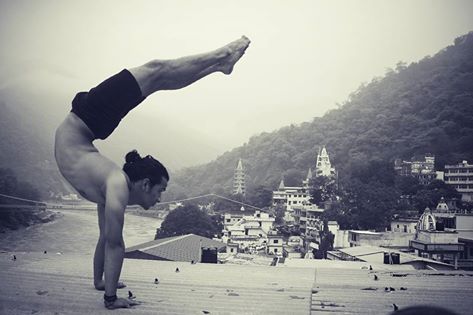Understanding Flowing-Style Yoga
Vinyasa yoga is one of the most commonly practiced styles in the west today – but we hear far less about it than we do about Ashtanga, Power or Bikram yoga. Find out what vinyasa means, where it comes from, and whether it’s right for you.
What Does Vinyasa Mean?
Literally translated, ‘vinyasa’ means ‘to arrange’ or ‘to place in a special way’. But often, it is simply translated as ‘flow’, and this can be a useful way to think of vinyasa. It refers to a carefully arranged sequence of asanas (yoga postures). Movement from one asana to the next follows the breath. The result is a smooth, flowing class that become almost dance-like.
Vinyasa yoga is a general name for any flowing style of yoga, and is characterised more by variation than consistency. Although it has evolved from Ashtanga yoga over time and is based on the ‘surya namaskar’ (‘salute to the sun’) sequence, teachers develop their own sequences using different asanas and creative transitions.
There are now many different styles of vinyasa that draw on various influences – not only different yoga styles, but also dance and martial arts.
Vinyasa Teachers
Renowned teachers include Shiva Rea, Seane Corne, and Rodney Yee. Although all are vinyasa teachers, they each have their own unique approach.
Some vinyasa teachers have a specific name for their own form of vinyasa – for example, Jivamukti yoga, founded by Sharon Gannon and David Life, is a specific style of vinyasa, as is Baron Baptiste’s Power Vinyasa.
Simple Vinyasa sequences
The simplest vinyasa sesquences involve just two movements, such as the well known cat-cow stretch:
- Begin on all fours.
- Inhaling, you lift your tailbone and chest and drop your navel towards the floor.
- Exhaling, tuck your tailbone under, arch the spine towards the ceiling, and tuck the chin to chest.
This can be repeated several times.
An example of a longer (yet still quite simple) vinyasa sequence is as follows:
- Begin in Ardho Mukha Svanasana (Downward Facing Dog pose).
- Inhaling, extend the right leg up and back.
- Exhaling, step the right foot between the hands and turn the back toes out, dropping the left heel to the floor.
- Inhaling, extend the arms up into Virbhadrasana I (Warrior I pose).
- Exhaling, extend the arms out to shoulder height and open the torso out to the left, into Virabhadrasana II (Warrior II).
- Inhaling, straighten the right leg and reach the right arm up towards the ceiling.
- Exhaling, reach towards the front of the mat and place the right hand on the right shin in Trikonasana (Triangle pose).
- Inhaling, bend the right knee and lift back up to Virabhadrasana II.
- Exhaling, cartwheel both hands to the floor on either side of the right foot and step back to Ardho Mukha Svanasana.
In a warm-up sequence, this could be practiced as it’s outlined above – with each breath corresponding to a movement. Or, each asana could be maintained for several breaths before flowing to the next position.
